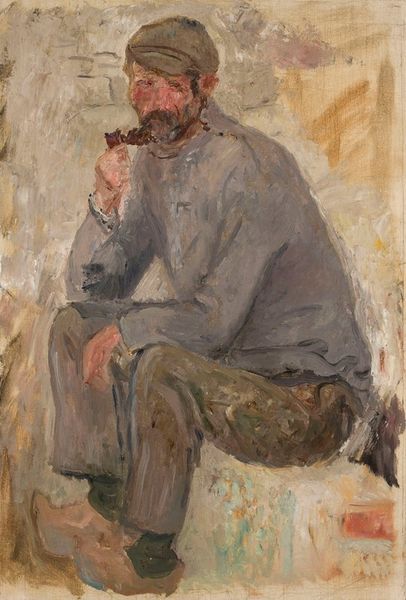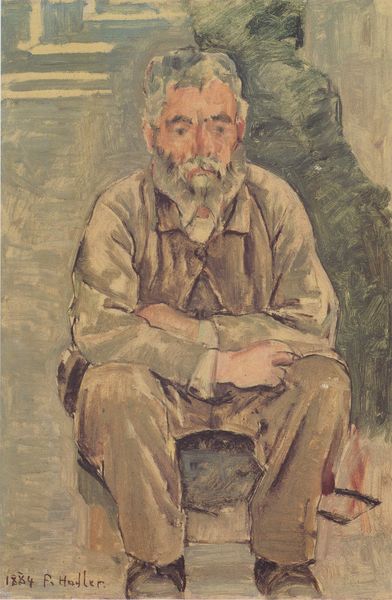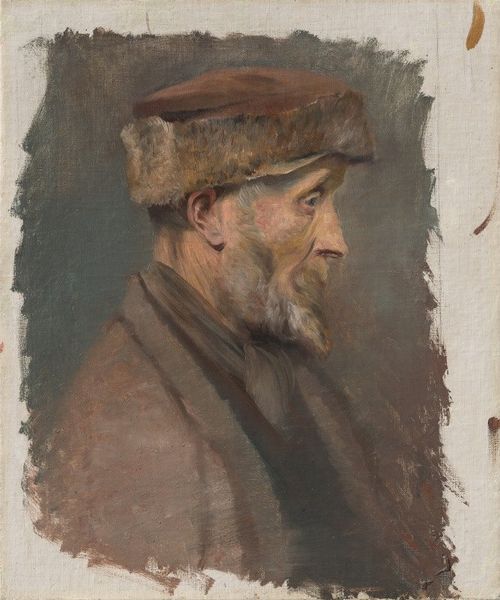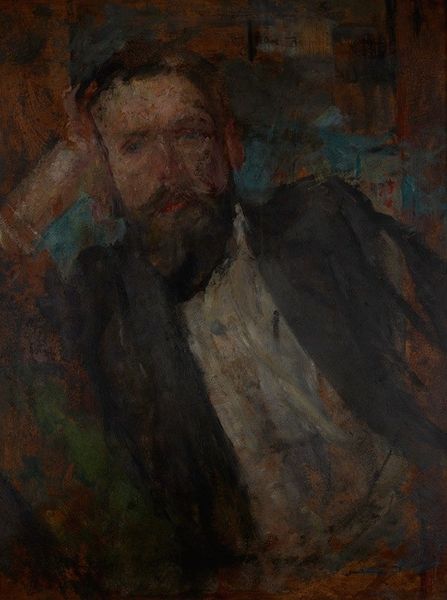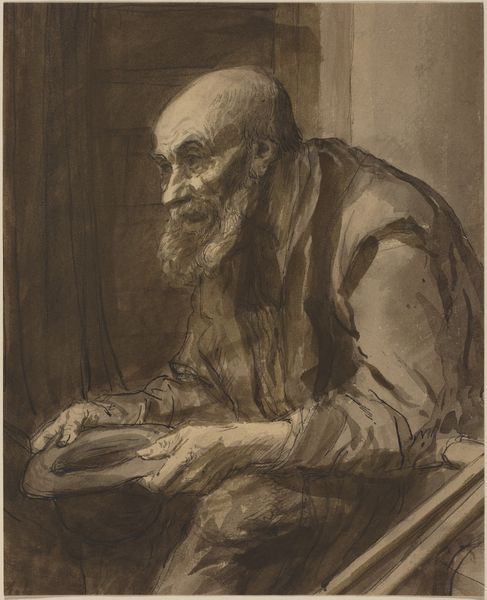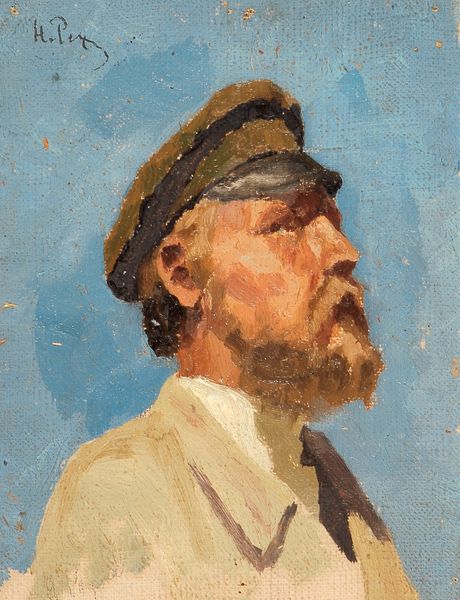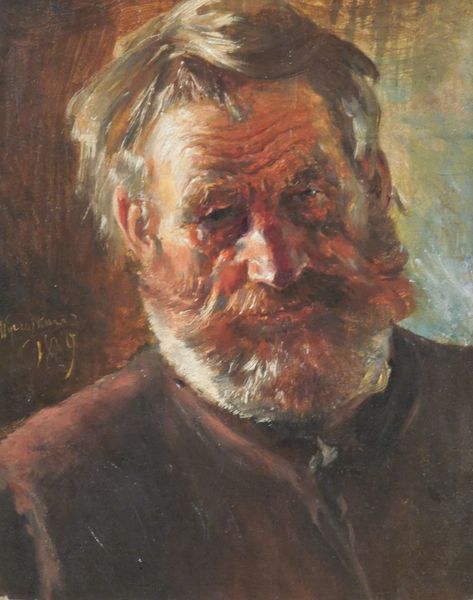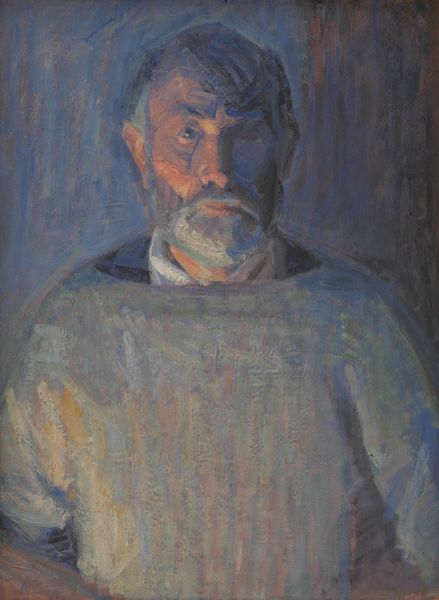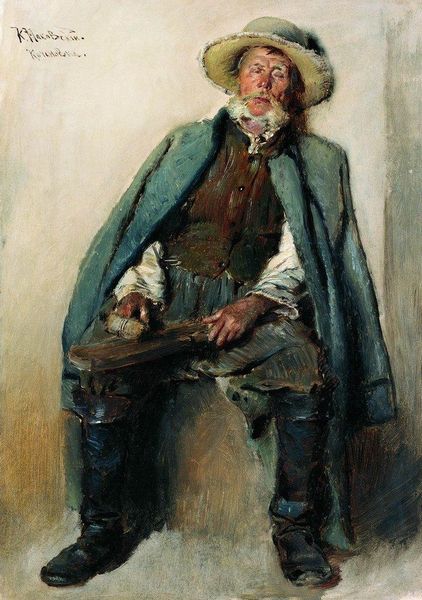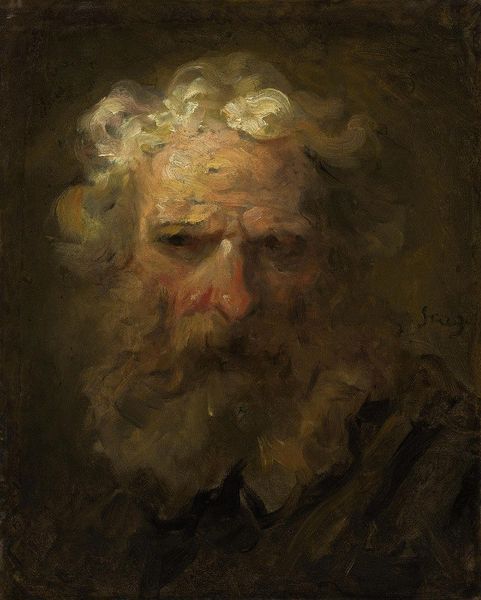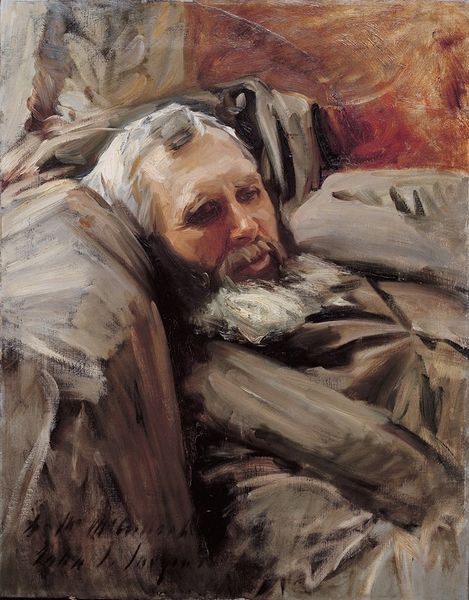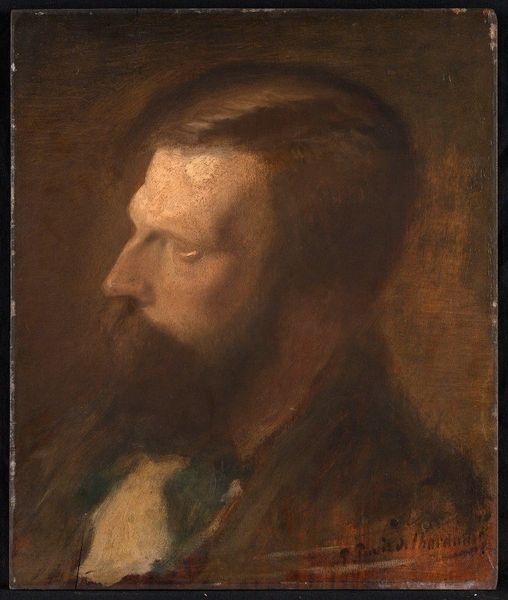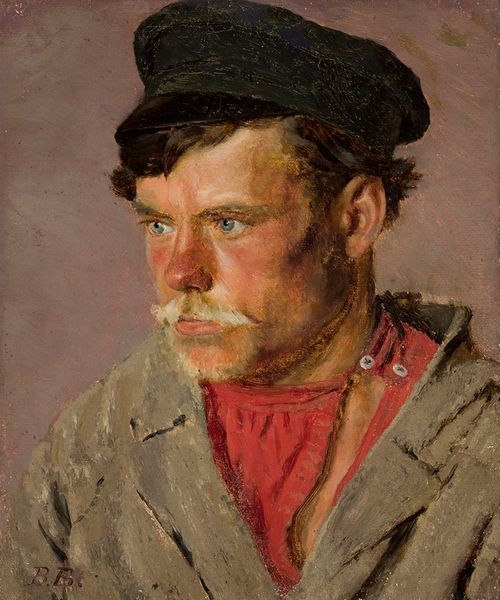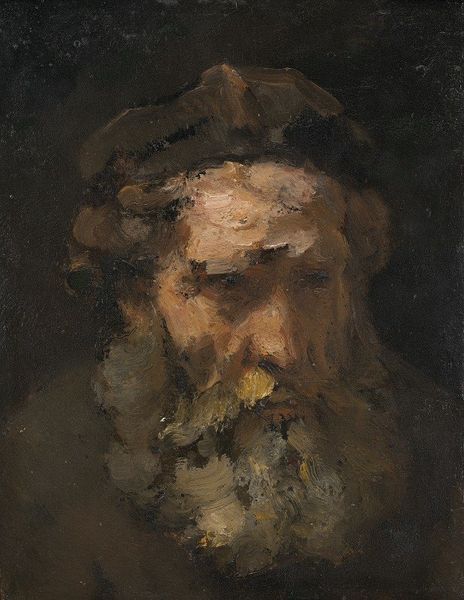
oil-paint
#
portrait
#
oil-paint
#
oil painting
#
modernism
#
realism
Dimensions: 81.9 × 66.4 cm (32 1/4 × 26 1/8 in.)
Copyright: Public Domain
Editor: This is "Himself," painted in 1913 by Robert Henri, using oil paint. I am struck by the piercing blue eyes of the subject, set against the earthy tones of his clothing and the background. What do you see in this piece, beyond just a portrait? Curator: I see a statement about representation and the gaze, particularly regarding working-class identity in the early 20th century. Henri, associated with the Ashcan School, often depicted everyday life, challenging the art world's focus on the elite. This self-portrait seems to reclaim agency. He is "himself," presented without romanticism or idealization. How does that raw honesty resonate with you? Editor: I hadn't considered the political aspect of depicting an ordinary man so directly. It feels almost defiant in its lack of embellishment. It definitely makes me wonder who this man *really* was beyond just another portrait of a random man. Curator: Exactly. Consider also the gaze. His eyes meet ours, not passively, but with an intensity that demands recognition. In the context of art history, dominated by the male gaze objectifying women, Henri subverts this power dynamic. He invites us to confront our own assumptions and biases. Editor: I see what you mean. It’s less about passive observation and more about a direct human connection, challenging the viewer to really *see* him. Curator: Indeed. And to see the value in the lives and experiences often rendered invisible by dominant narratives. It pushes against the grain, forcing a reevaluation of what—and who—deserves to be seen and remembered. Where does that leave you? Editor: It makes me think about who gets represented and why. And it’s not enough to just passively accept the representation, but actively think about it and discuss it. Thank you! Curator: The pleasure is all mine! That's the start of critical engagement and helps challenge those structures.
Comments
No comments
Be the first to comment and join the conversation on the ultimate creative platform.
